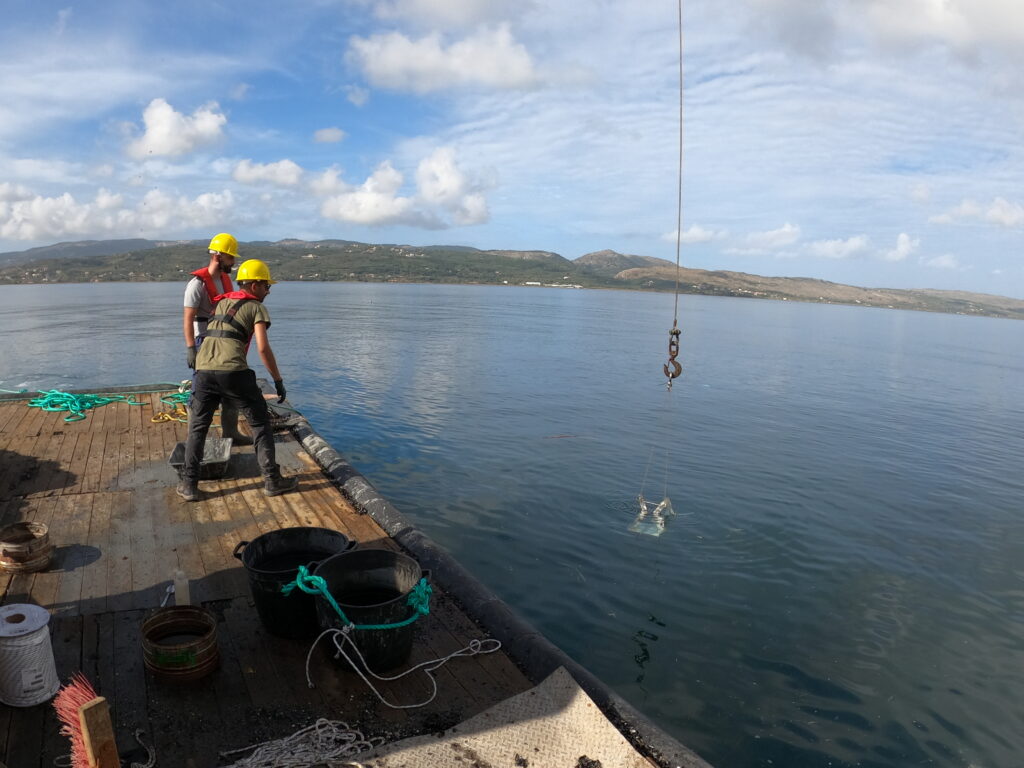Environmental sampling includes the extraction of representative samples from the field which are then analysed in the laboratory.
Sampling involves:
- the sampling plan, which follows a statistical / scientific approach of selecting representative sampling sites and an appropriate number of samples. The sampling plan may also take legal or other requirements into accounts.
- the actual sampling activities in the field, i.e. extracting water and/or sediment from the environment, pre-processing and storing it and transporting it to the laboratory. Each of these steps follow a strict pre-defined protocol and everything is documented in a standardized way.


We perform all steps of the sampling procedure, from planning the sampling strategy —either according to Greek legislation ΥΠΕΝ/∆ΙΠΑ/121634/7242 -20/12/2019 (Πίνακας Ι, ΙΙ, ΙΙΙ, ΑΕΠO), to meet the requirements of the Aquaculture Stewardship Council, or to cater for specific scientific analyses— to the actual fieldwork itself.
Our laboratory provides all the necessary equipment required for sampling water and sediment samples in aquaculture units (apart from the vessel and crane/winch, which are usually provided by customers). Equipment includes various bottom grabs, sieves, water samplers, multimeter probes for physicochemical measurements, secchi disk for measuring turbidity, and a variety of smaller item required for smooth processing of the samples.
The dedicated sampling team of our research group has many years of experience in the field and performs sampling according to ISO 16665:2014 and ISO 12878:2012.
